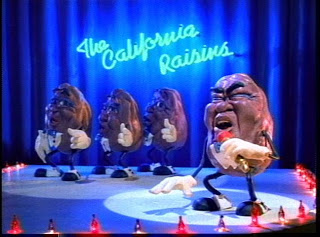The Grape Crusader
During World War II, the United States had over 15 million men fighting in its armed services. Many of those men were deployed away from home and needed to be fed. Food items which were nutritious,tasty, and perhaps most importantly had a long natural shelf life were critical. (Even canning wasn’t a great idea, as the requisite metal could be better used in other wartime needs.) One such food was raisins — sun-dried grapes which don’t spoil and can be transported long distances without much packaging. The government bought them up in bulk, sending raisins around the world to feed the troops.
But when the war ended, demand for raisins crumbled. When supply stays the same but demand evaporates, prices tumble. Raisin farmers found their once-booming businesses faltering and in a maneuver reminiscent from the New Deal era, the government stepped in. In 1949, the United States Department of Agriculture (USDA) promulgated Marketing Order 989, which required raisin producers in California to give a sizable percentage of their raisins to the government, for free. This, of course, had the aim of reducing supply and therefore buoying (raising?) raisin prices. And had the order stayed in effect for a year or two — or even five to ten — few would have really noticed or cared.
Marketing Order 989 lasted much longer. It was revised in 1989 and… well, it’s still enforced today. The surplus raisins are given to the Raisin Administrative Committee (raisins.org!), a collective of 47 raisin growers which, with USDA oversight, sells the raisins in what are called “non-competitive markets” — to schools, to government agencies, and overseas. The committee uses the revenue to pay its own administrative costs and to promote raisins domestically. (In the 1980s, the committee’s precursor, the California Raisin Advisory Board, created the “California Raisins” such as the one singing in the picture above, and if you were alive during their heyday, you almost certainly knew about them. The California Raisins — “a fictional rhythm and blues musical group as well as advertising and merchandising characters composed of anthropomorphized raisins” per Wikipedia — even had their own short-lived TV show.) Excess money is returned to the farmers, but in general, that doesn’t happen. As the Washington Post reported, in one year, the committee earned just north of $65 million — and spent all of it.
As one can imagine, not all raisin growers were fond of the forced forfeiture of their crop. One example is a farmer named Marvin Horne, who simply refused to do so from 2002 until present. He’s managed to avoid paying the fines and penalties since. Avoiding these costs has come at two prices, though. One, it has divided the raisin growing community — some support his efforts to change the law through protest, while others are upset that he’s able to sell 100% of what he produces. (One farmer quoted in by the Post lost 47% of his harvest in 2003, and called Horne a “criminal” for not playing by the rules.) Second, and more importantly, Horne has spent a lot of time in court. The USDA filed an action against Horne soon after he went rogue, and Horne, after losing his administrative hearing, took the case to federal court. He lost at every level until last month, when the Supreme Court ruled in his favor, 9-0. One justice, Sonia Sotomayor, called the order “the world’s most outdated law,” and the Supremes as a whole told a lower court to explore whether the seizure of raisins was Constitutional.
For raisin lovers, that’s a big question, because if Horne wins, the price of raisins may fall dramatically. But for Horne himself, it’s an even bigger question. In total, Horne owes the government “enough raisins to fill 3.8 million boxes of Raisin Bran cereal,” as cheekily quantified by the Post. That’s not cheap: If he loses his court case, he’s on the hook for $3 million and will likely have to declare bankruptcy.
Bonus fact: Another way the U.S. government regulates raisins? By defining “raisin bread.” Part of the Code of Federal Regulations (available here) requires that raisin bread have “not less than 50 parts by weight of seeded or seedless raisins […] for each 100 parts by weight of flour used.”
From the Archives: Sandwich Law: What makes a sandwich a sandwich, legally speaking.
Related: The California Raisin DVD, a key chain, a novelty bank, and … the official fan club watch set (?).

